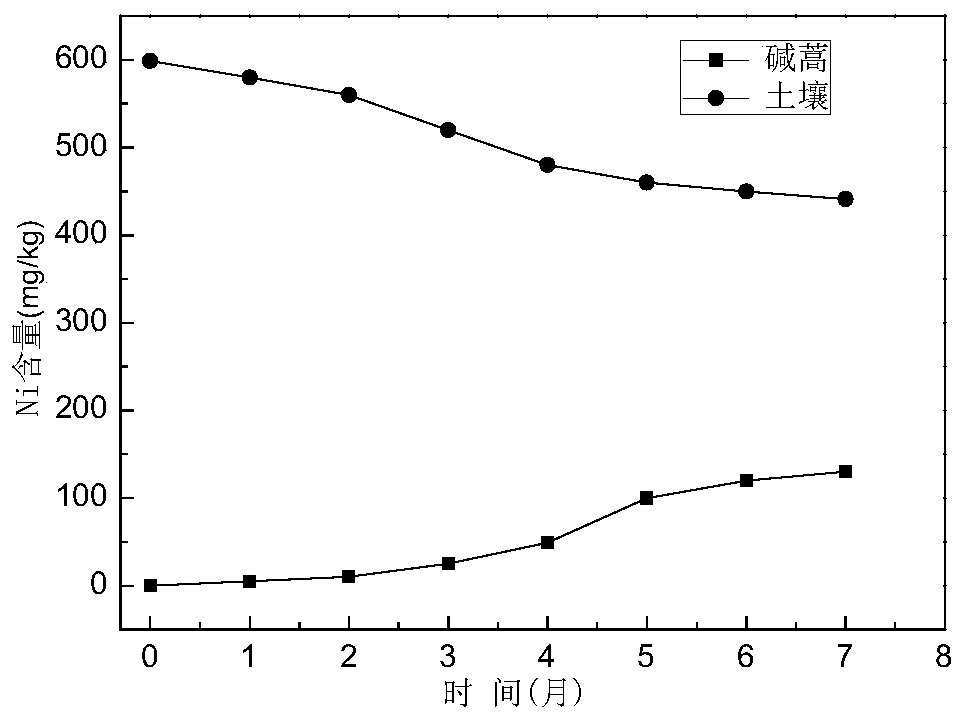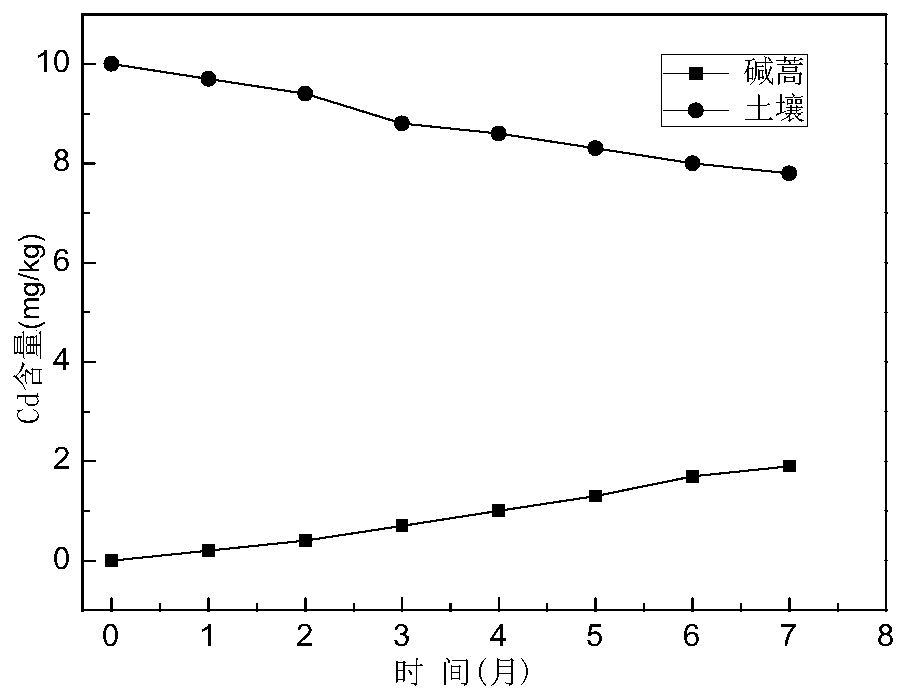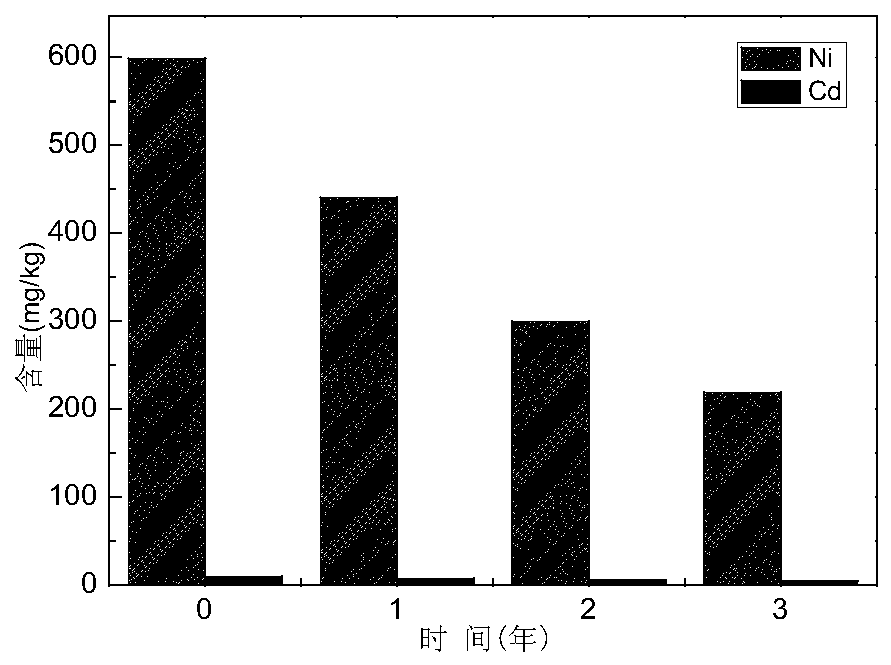A kind of removal method of heavy metal ni and/or cd in sandy soil
A sandy soil and heavy metal technology, applied in the field of soil heavy metal pollution control, can solve the problems of difficult to find plants and few repairs of heavy metal pollution, and achieve the effects of easy mastery and promotion, low cost, and no secondary pollution
- Summary
- Abstract
- Description
- Claims
- Application Information
AI Technical Summary
Problems solved by technology
Method used
Image
Examples
Embodiment 1
[0038] 1) Through detection, determine the area polluted by heavy metal Ni and Cd and the content of Ni and Cd in the soil in this area. The concentration of heavy metal Ni in the soil is less than or equal to 600mg / kg, and the concentration of heavy metal Cd is less than or equal to 10mg / kg. On the soil in the polluted area, select Artemisia spp. seedlings with a plant height of 5 cm, good growth, and a difference in biomass of <5 g for planting;
[0039] 2) The planting method is concentric circle radiation, that is, first determine the center of the area as the origin, and radiate concentric circles with a radius of 30cm. The radius difference between two adjacent circles is 30cm, and the distance between plants on the same circle is 20cm.
[0040] 3) Artemisia basilicum is allowed to grow freely under suitable natural conditions without artificial interference. Harvest all the plants after maturity, properly pretreat the harvested biomass, and then ferment to produce biogas...
Embodiment 2
[0044] 1) Through detection, determine the area polluted by heavy metal Ni and Cd and the content of Ni and Cd in the soil in this area. The concentration of heavy metal Ni in the soil is less than or equal to 600mg / kg, and the concentration of heavy metal Cd is less than or equal to 10mg / kg. On the soil in the polluted area, select Artemisia spp. seedlings with a plant height of 6 cm, good growth, and a difference in biomass of <5 g for planting;
[0045] 2) Choose the concentric circle radiation as the planting method, that is, first determine the center of the area as the origin, and radiate the concentric circles with a radius of 35cm. The radius difference between two adjacent circles is 40cm, and the distance between plants on the same circle is 30cm.
[0046] 3) Artemisia basilicum is allowed to grow freely under suitable natural conditions without artificial interference. Harvest all the plants after maturity, properly pretreat the harvested biomass, and then ferment to...
Embodiment 3
[0050] 1) Through detection, determine the area polluted by heavy metal Ni and Cd and the content of Ni and Cd in the soil in this area. The concentration of heavy metal Ni in the soil is less than or equal to 600mg / kg, and the concentration of heavy metal Cd is less than or equal to 10mg / kg. On the soil in the polluted area, select Artemisia spp. seedlings with a plant height of 7cm, good growth, and a difference in biomass of <5g for planting;
[0051] 2) The planting method is concentric circle radiation, that is, first determine the center of the area as the origin, and radiate concentric circles with a radius of 40cm. The radius difference between two adjacent circles is 50cm, and the distance between plants on the same circle is 40cm.
[0052] 3) Artemisia basilicum is allowed to grow freely under suitable natural conditions without artificial interference. Harvest all the plants after maturity, properly pretreat the harvested biomass, and then ferment to produce biogas. ...
PUM
 Login to View More
Login to View More Abstract
Description
Claims
Application Information
 Login to View More
Login to View More - R&D
- Intellectual Property
- Life Sciences
- Materials
- Tech Scout
- Unparalleled Data Quality
- Higher Quality Content
- 60% Fewer Hallucinations
Browse by: Latest US Patents, China's latest patents, Technical Efficacy Thesaurus, Application Domain, Technology Topic, Popular Technical Reports.
© 2025 PatSnap. All rights reserved.Legal|Privacy policy|Modern Slavery Act Transparency Statement|Sitemap|About US| Contact US: help@patsnap.com



